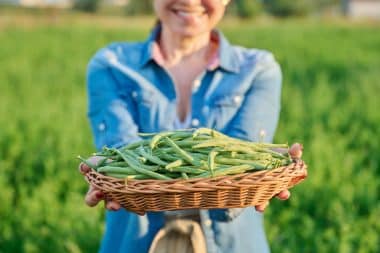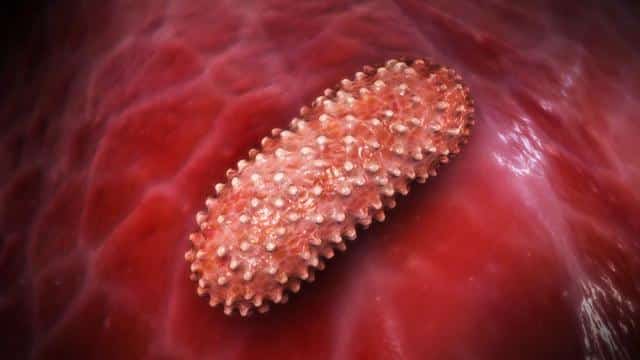Green beans, often underestimated for their simplicity, are one of the most nutritionally valuable and versatile vegetables available today.
Whether you’re looking to improve your diet, diversify your home garden, or embrace more sustainable living practices, green beans offer a bounty of benefits.
They are low in calories, rich in essential nutrients, easy to grow, and have even been shown to contribute to improved mental and physical health through gardening. This article explores why green beans should be a staple in both your diet and backyard garden, supported by nutritional science and gardening research.
Nutritional Powerhouse: What Makes Green Beans Healthy?
At first glance, green beans might not seem like superstars in the vegetable world. But dive deeper, and you’ll discover their nutritional content is impressively rich. A single cup of green beans contains only 31 calories, zero grams of fat, and about 3.4 grams of fiber.
This makes them an excellent choice for anyone managing their weight or looking to maintain a healthy diet. Nutritionally, green beans offer 36% of the recommended daily value (DV) for vitamin K, essential for blood clotting and bone health, along with 18% of the DV for immune-boosting vitamin C and 9% for folate, a crucial B vitamin for cell growth and metabolic function.
Additionally, they provide iron, potassium, and small but meaningful amounts of calcium and magnesium… all key minerals for cardiovascular and muscular function (Whitson, Cleveland Clinic).
Digestive Health and Satiety: Fiber at the Forefront
One of the green beans’ most notable features is their fiber content. Fiber not only aids digestion by preventing constipation and promoting regular bowel movements but also supports a healthy gut microbiome.
This is increasingly recognized as crucial for immune health, mental well-being, and metabolic stability. Foods rich in fiber are digested more slowly, leading to prolonged satiety. This helps prevent the blood sugar spikes and crashes that often follow the consumption of refined carbs and sugars.
The natural balance of fiber and sugars in green beans ensures a gradual energy release, making them ideal for people looking to manage hunger and maintain energy levels throughout the day.
Heart Health and Blood Sugar Control
Green beans contain two key nutrients that contribute significantly to heart health—folate and potassium. Folate helps reduce homocysteine levels, a compound linked to heart disease when present in high amounts, while potassium aids in maintaining optimal blood pressure.
The fiber in green beans is particularly effective in lowering LDL cholesterol, often referred to as “bad” cholesterol. Soluble fiber binds to cholesterol particles in the digestive system and removes them from the body before they can enter the bloodstream. Additionally, their low glycemic index and rich fiber content make them a beneficial food for individuals with or at risk of developing diabetes, as they help moderate blood glucose levels.
Bone Strength and Immune Support
Though calcium often gets all the credit for bone health, vitamin K is similarly crucial in strengthening bones and preventing fractures. Green beans deliver a generous amount of vitamin K, supporting calcium binding in bones and maintaining bone density.
Vitamin C, another abundant nutrient in green beans, supports the immune system by enhancing the production and function of white blood cells, the body’s frontline defenders against pathogens. Regular consumption of green beans can thus bolster the immune system, helping the body to fend off infections more effectively.
Antioxidants and Anti-Aging Benefits
In addition to vitamins and minerals, green beans are a good source of antioxidants, including flavonoids and beta-carotene. These compounds protect the body from oxidative stress, a process that contributes to cellular aging and various chronic diseases.
Antioxidants neutralize free radicals… unstable molecules that can damage cells… and thus help maintain healthy skin, reduce inflammation, and potentially lower the risk of diseases like cancer and neurodegenerative disorders. Including green beans in your diet is a simple yet effective way to benefit from these protective compounds.
Culinary Versatility and Accessibility
Green beans are incredibly versatile in the kitchen, inspiring creativity in your cooking. They can be enjoyed raw in salads for a crunchy texture or cooked through various methods—steamed, sautéed, roasted, or stir-fried. T
heir mild flavor allows them to complement a wide range of dishes without overpowering other ingredients. Moreover, green beans are accessible year-round in fresh, frozen, or canned forms. Frozen beans, often flash-frozen shortly after harvest, retain most nutrients.
Canned beans also offer similar benefits but should be rinsed to reduce sodium content. These options make green beans a convenient and economical addition to any meal plan.
Growing Green Beans: Health Benefits Beyond Nutrition

Cultivating green beans in your backyard offers benefits extending far beyond the dinner plate. Gardening itself has been shown to significantly improve mental and physical well-being, providing a strong motivation to start your own garden.
A comprehensive meta-analysis published in Preventive Medicine Reports found that gardening reduces symptoms of depression and anxiety, lowers body mass index, and enhances life satisfaction and a sense of community (Soga et al., 2017).
The physical activity involved in planting, watering, and harvesting promotes cardiovascular health and flexibility. At the same time, the act of nurturing plants provides emotional fulfillment and stress relief.
Easy to Grow, Rewarding to Harvest
Green beans are ideal for backyard gardens due to their minimal space requirements, short growing cycle, and resilience. Whether you choose bush varieties, which grow compactly, or pole beans that climb and maximize vertical space, these plants require only basic care—well-drained soil, consistent watering, and ample sunlight.
Richard Ebesu of the University of Hawaii emphasizes that beans grow exceptionally well in a variety of climates and can be harvested multiple times during the season (Ebesu, 2004).
Additionally, innovative low-cost, eco-friendly planting methods have made it easier for home gardeners to cultivate pest-resistant, high-yield crops, reducing dependence on chemical fertilizers and pesticides (Gao, 2015).
Sustainability and Food Security
Growing green beans at home also contributes to broader sustainability goals, making you feel responsible and part of a larger stewardship movement.
It also promotes food security by ensuring a steady, local supply of nutritious vegetables. In times of economic uncertainty or supply chain disruptions, having a reliable source of food just steps away from your kitchen can be both empowering and practical.
A Small Bean with Big Impact
Green beans might appear humble, but their nutritional profile, culinary versatility, and ease of cultivation make them a standout vegetable.
From enhancing digestion and supporting heart and bone health to offering mental health benefits through gardening, green beans deliver profound value for anyone striving for a healthier, more sustainable lifestyle. Whether on your plate or in your garden, they are a simple yet powerful way to nourish your body and soul.










